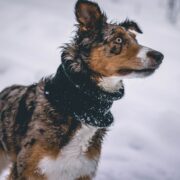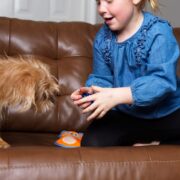Fresh snow can be one of the most exciting parts of winter for your dog. Lots of dogs love the chance to run, jump, and race through the fluffy white powder. There are so many winter activities to enjoy with your dog, and snowfall can add some serious thrill to their chill in cold weather.
Unsure whether or not to let your pup eat the winter white stuff on the ground? Protect your dog’s health when you head outside this winter by making sure the snow is safe for them to eat, play, and enjoy.
First of All, Why Do Dogs Eat Snow?
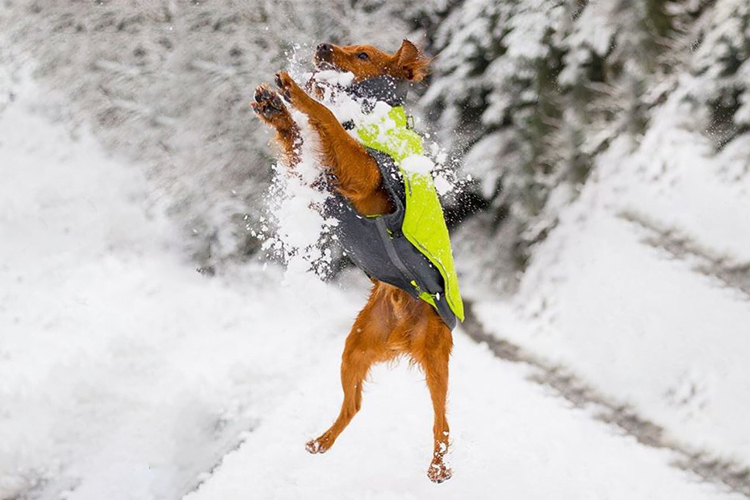
Maybe it’s been passed down from their canine ancestors who relied on snow for survival, maybe it’s for the same reason people love catching snowflakes on their tongues or eating bowlfuls of it for a winter treat.
Whatever the reason, snow eating is a typical dog behavior that need not be a problem with a little extra attention from pet parents. Plus, what’s cuter than seeing your pup nibble fresh snow or catch a snowball mid-air?
Can My Dog Eat Snow If It’s Clean?
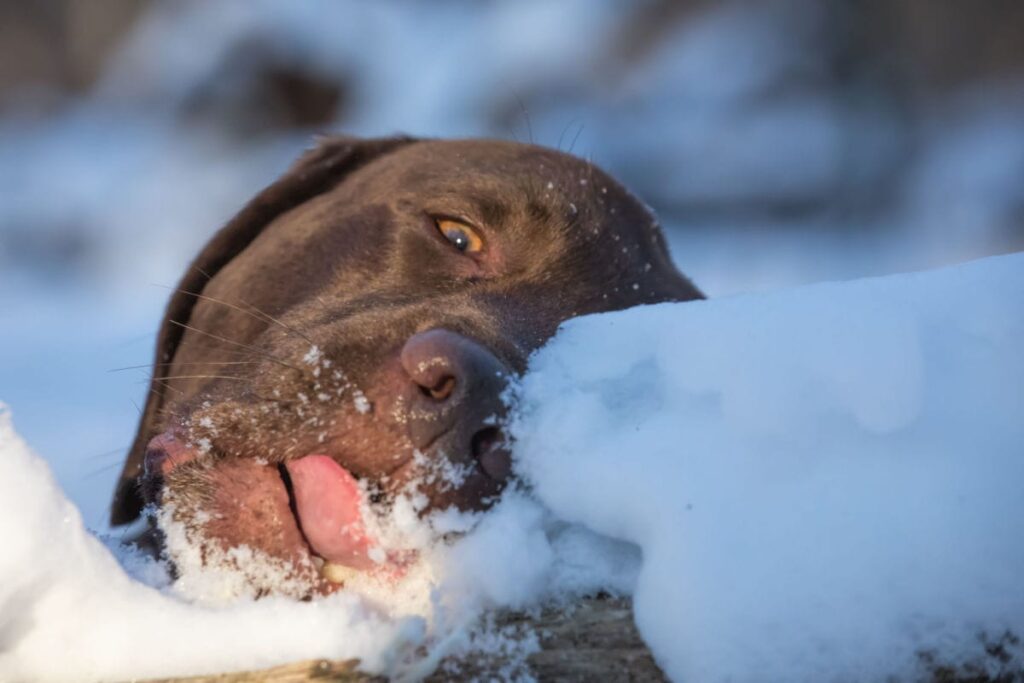
The short answer is yes — there’s nothing wrong with letting your dog lap up a little bit of fresh, clean snow. After all, snow is just frozen water!
General rules to follow when consuming snow for humans or dogs is to eat snow that’s freshly fallen, looks clean, hasn’t been plowed, and is away from roadways and businesses.
Both people and pups should also make sure they’re getting plenty of clean water that doesn’t have to be melted using their body heat when doing outdoor activities in cold weather. This way your dog stays hydrated without the risk of lowering their body temperature!
How Do I Know Which Snow Is Safe For Dogs?
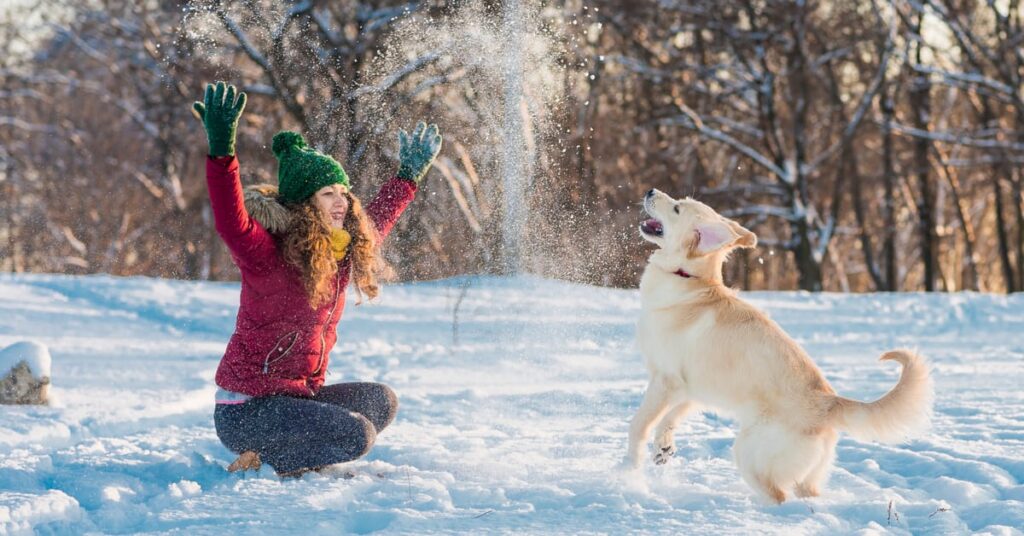
Fresh snowfall is a good snowfall for dogs. When deciding which snow is safe to eat, of course, you want to seek out the snow that looks clean first and foremost. Snow is safest and best when it’s freshly fallen.
We’ve all heard the old adage about eating “yellow snow,” which your dog may actually be attracted to! Needless to say, avoid letting your pooch eat any plowed, dirty, or discolored snow off the bat.
Can My Dog Eat Snow That’s Not Fresh?
The trouble with snow after it’s ‘past’ fresh is that it can absorb chemicals from the ground like those found in ice melts and rock salt, which can include chloride or magnesium — both dangerous for your dog’s stomach even in small amounts.
Antifreeze leaking from vehicles is common in winter, and if consumed by dogs can cause major health problems. The chemicals in antifreeze affect the calcium in your dog’s body, causing respiratory damage, liver damage, and kidney failure.
The same is true for drinking from puddles, which collect water from melted snow but can also become pools for nasty chemicals to run into.
Fallen snow near another water source can contain particles collected there
How Much Is Too Much Snow?
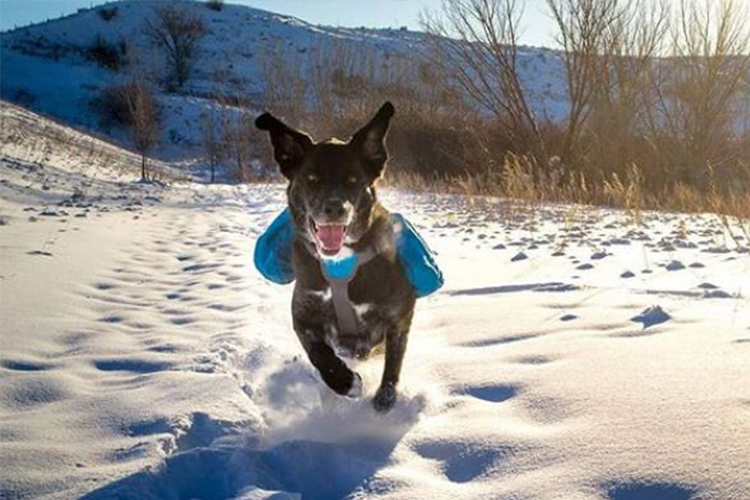
The trouble with eating too much snow is that it can start to lower your dog’s body temperature, and you want your dog to stay safe, warm, and cozy for winter outings!
Already being outside and exposed to the elements combined with too much ingestion of such a cold substance can make your dog dangerously chilled.
Hypothermia can occur as soon as your dog’s body temperature drops below 99 degrees Fahrenheit. Make sure they get a break to come indoors to warm up and drink some room-temperature water before and after winter outings.
What If My Dog Eats Large Amounts of Snow?
It’s hard to know whether dogs experience cold headaches or brain freeze like humans do. If only dogs could talk! Unfortunately, they can’t simply just tell us how they feel, so it’s up to us to decide which snow looks safe and how much snow is enough.
If your dog is eating lots of snow every time go outside, it could be a sign they’re not getting enough water. Always make sure your dog has access to a fresh, clean water bowl throughout the day, whether outdoors or even on lazy days in the house.
If your dog is still constantly drinking water, talk to your veterinarian to rule out any underlying health problems like kidney disease or diabetes.
Winter Safety Tips For Dogs And Dog Owners
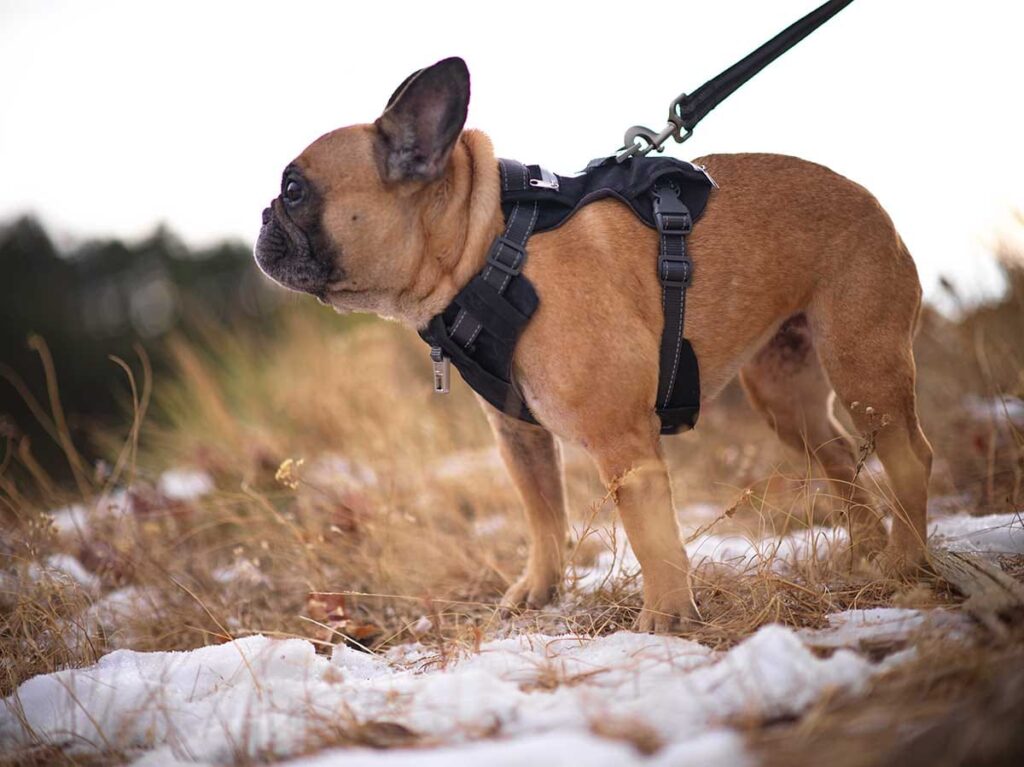
As much as we love a cozy day on the dog bed, you and your pup probably don’t want to be cooped up all winter! There are so many fun ways to get outdoors with your dog, stay active with winter sports you can enjoy together, and enjoy the beauty of winter. These tips will help you enjoy your winter adventures even more!
Bundle Up Your Adorable Pup
One of the best ways to keep your dog warm in the winter is to invest in a snazzy dog jacket. That extra layer of fluff on top of their fur will help protect them from chilly winds or falling snow for any kind of winter outing, whether it’s winter hiking or cross-country skiing. Plus, they’ll look pretty cute dressed up in their own winter gear!
Don’t Forget The Feet!
Cold surfaces like packed snow and crunchy ice can be rough on your dog’s paws. Protect your pooch’s paw pads on winter outings with dog booties, or a hydrating protective salve like Musher’s Secret.
Don’t Stay Out In The Cold Too Long
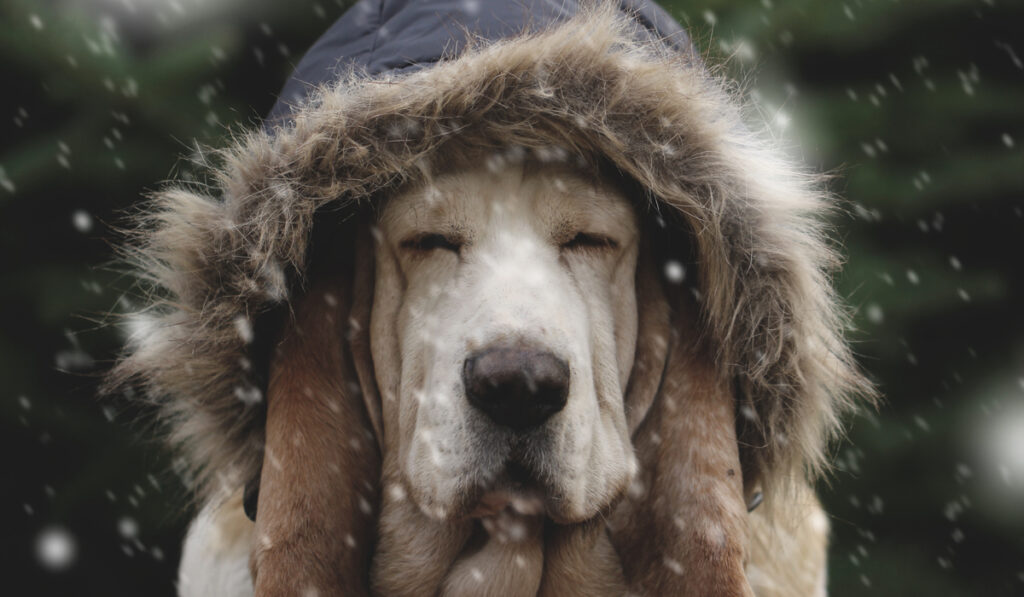
As we said earlier, dogs just don’t have the words to tell us when they’re cold! Keep an eye out for signs of cold-induced distress like shaking or whining when doing outdoor winter activities. If your dog has any health conditions, limit their outdoor activities in the winter to accommodate them.
Know How Cold Is Too Cold
There are a few factors to consider when deciding how cold is too cold for your dog to be outdoors. As a general rule, above 40 degrees Fahrenheit isn’t typically an issue for most dog breeds.
As the temperature drops into the low 30s, it’s important to look at your dog’s coat type, size, weight, age, and as we mentioned overall health. Unless prepared and conditioned for winter activities in cold weather, most dogs shouldn’t be left outside when temperatures drop into the 20s.
Create A Cozy Place To Rest Post-Winter Fun
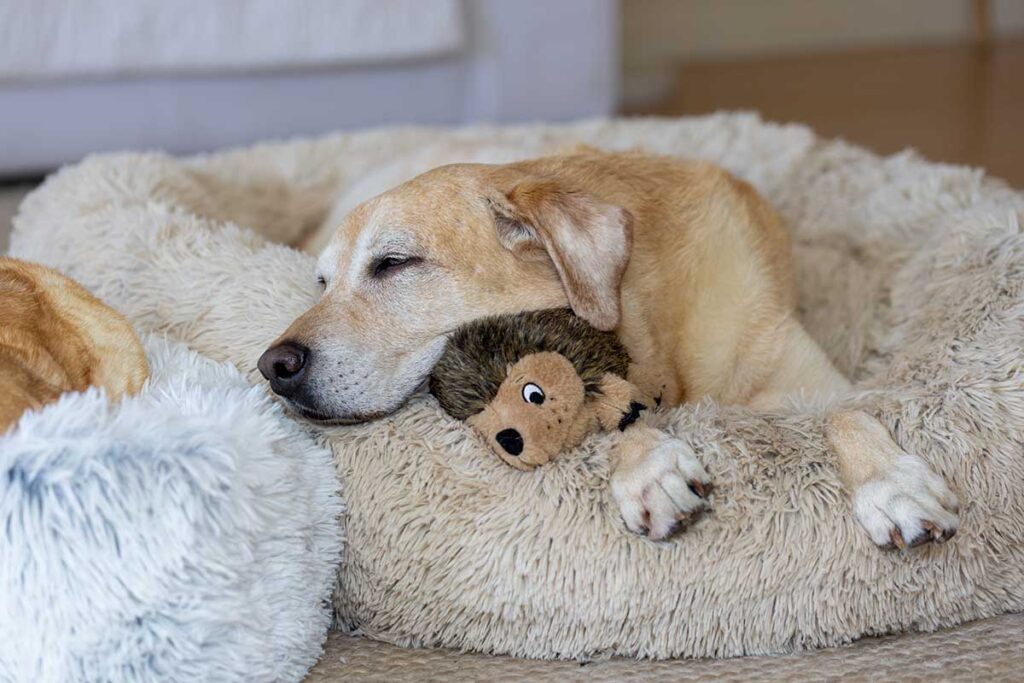
After a day of running and romping through the snow, give your precious pup a comfortable place to have a proper winter nap. A big comfy dog bed and a favorite plush toy make the perfect cozy combination, and heated dog beds will put your pooch in puppy heaven.
